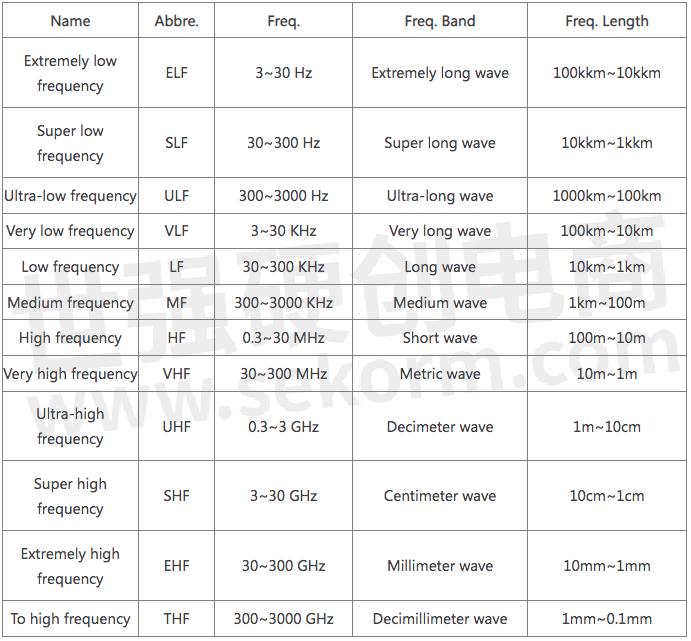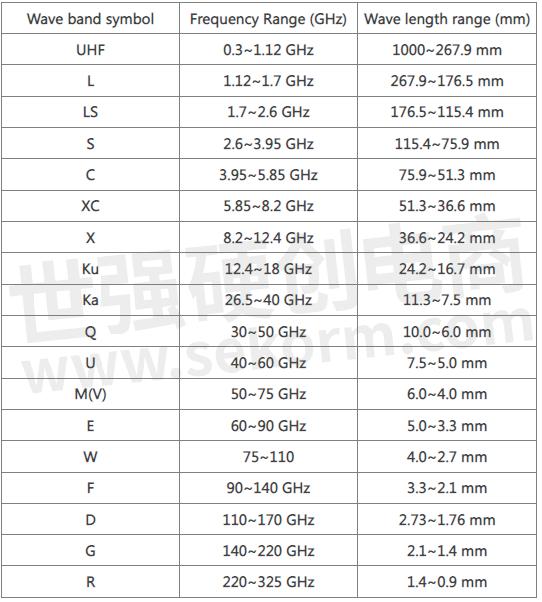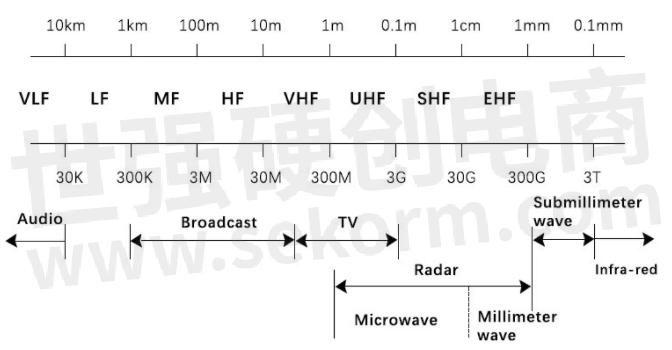A Brief Introduction to Working Frequency of Radar

The the radar frequency is the most important parameter of the radar parameters. So today UIY will give a brief introduction to work radar frequency. The core of radar working principle is that the radar transmits electromagnetic wave of a certain frequency, receives the echo reflected by the target, and determines some states of the target according to the echo. The frequency of electromagnetic wave emitted by radar is its working frequency.
The radar frequency band refers to the frequency range in which the radar transmits radio waves. It is measured in Hertz (Hz) or cycles per second (C/s). Most radars work in the ultrashort and microwave bands, with frequencies ranging from 30MHz to 300GHz and a corresponding wavelength from 10m to 1mm.
The specific division is as follows:



The wavelengths of radars in different bands are different:
1. Short wavelength: high resolution, poor penetration and easy to be absorbed;
2. Long wave length: low resolution and strong penetration.
Radar functions in different bands:
Search radar: working frequency band (VHF, UHF, L) ;
Search and tracking radar: working band (L, S, C) ;
Fire control radar/Imaging radar: working band (C, X, Ku) ;
Missile carrier radar: working band (X, Ku, K, Ka, V, U, W) .
Radar frequency selection:
Although radar can work in a wide frequency range, different frequencies have different working characteristics and are suitable for different purposes. Therefore, the frequency must be carefully selected when designing a radar.
Radar frequency has obvious influence on radar performance such as antenna transmit gain, antenna effective receiving area (at a certain transmit gain), transmit power, receiver noise, propagation loss, meteorological echo etc. This matters a lot when choosing the type of radar and its important indicators such as action distance, accuracy, resolution, anti-interference ability, volume weight, mobility, cost and so on.
- +1 Like
- Add to Favorites
Recommend
- Radar Architecture: How to Connect Different Radar Sensors
- Radar transceivers: a key component for ADAS & Autonomous Driving-Basics of FMCW radar
- Renesas to Acquire Steradian to Expand Its Reach in the Radar Market
- Keysight Expands Signal Source Analyzer Portfolio for Wireless, Radar, and High-Speed Digital Applications
- Keysight FieldFox Handheld Microwave Analyzer Speeds Installation of 5G, Radar and Satellite Communication Systems
- Antennas for Automotive Radar
- The lowest power consumption with the smallest size: Terasilic‘s 24GHz radar AiM
- Installation of UIY Surface Mounting Isolator/Circulator
This document is provided by Sekorm Platform for VIP exclusive service. The copyright is owned by Sekorm. Without authorization, any medias, websites or individual are not allowed to reprint. When authorizing the reprint, the link of www.sekorm.com must be indicated.





































































































































































































































































































































































































































































































































































































































































































































































































































